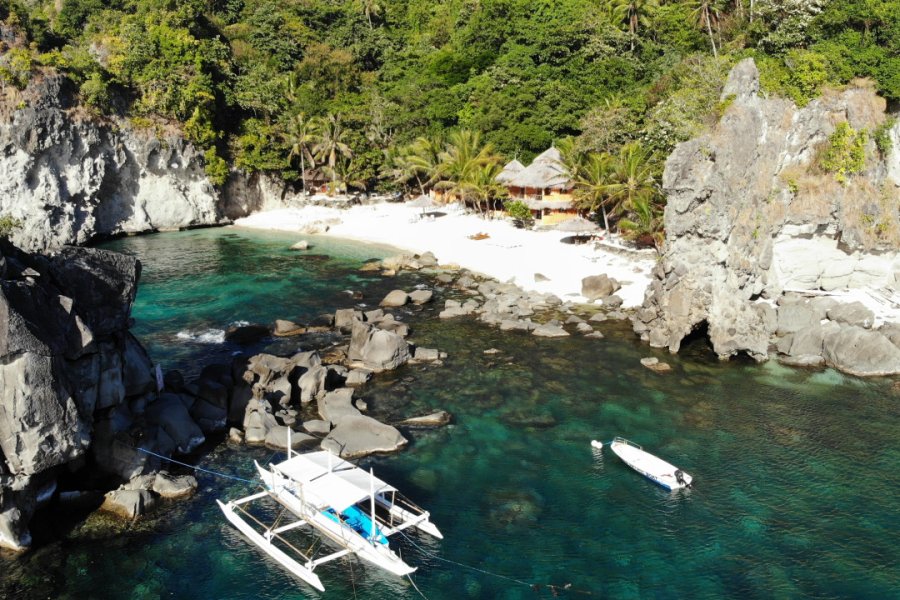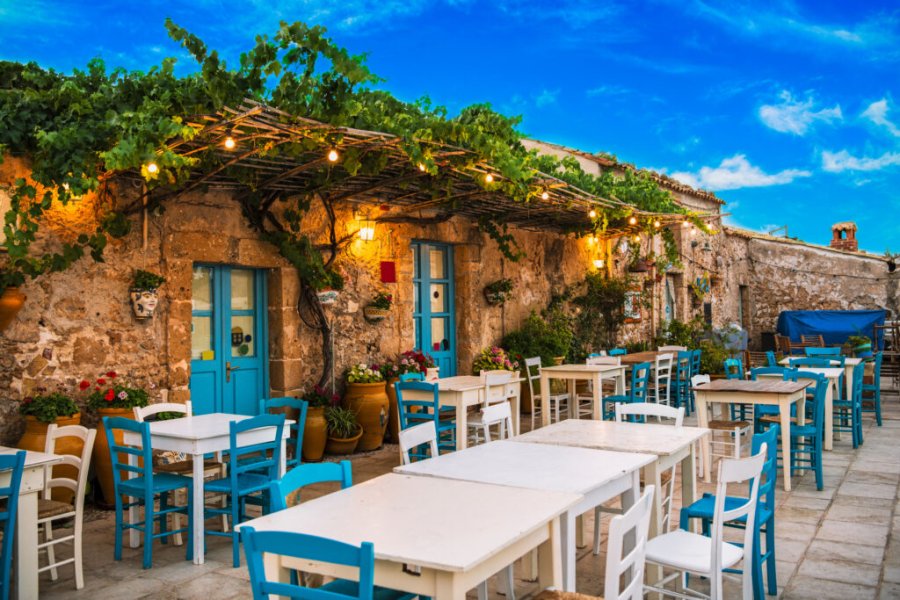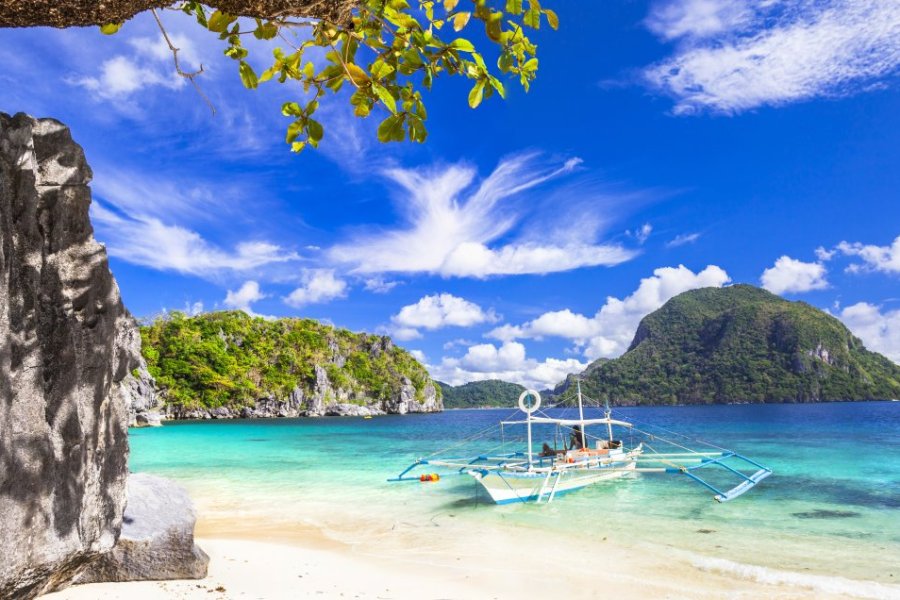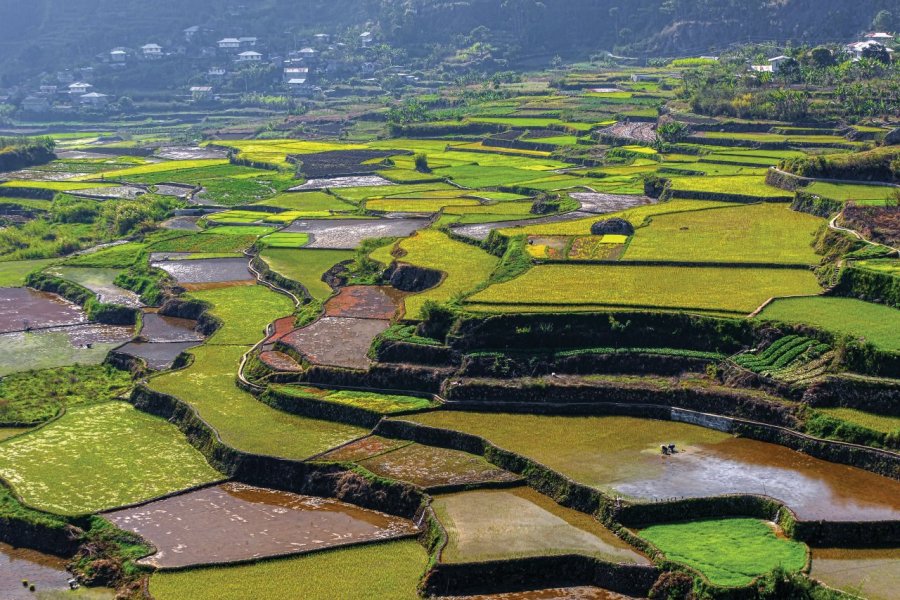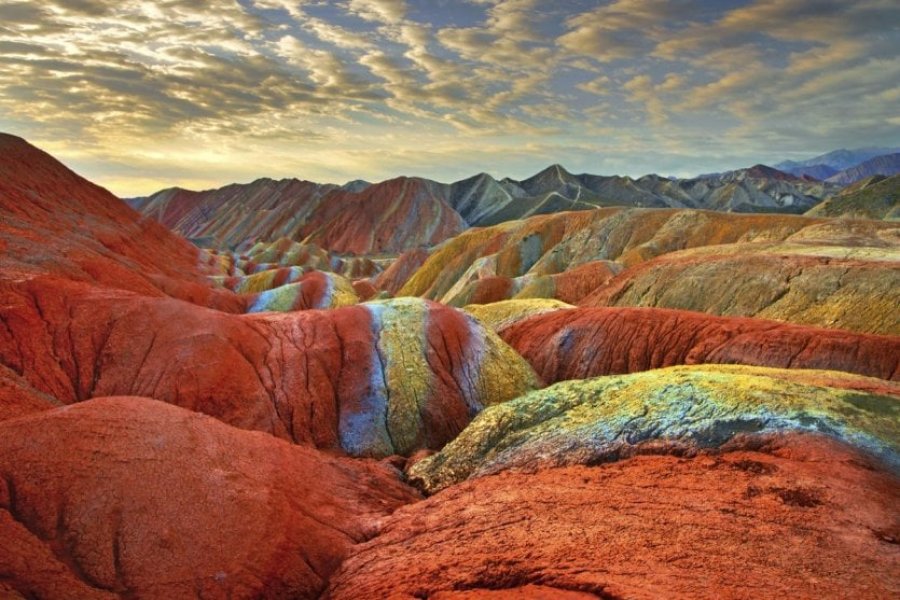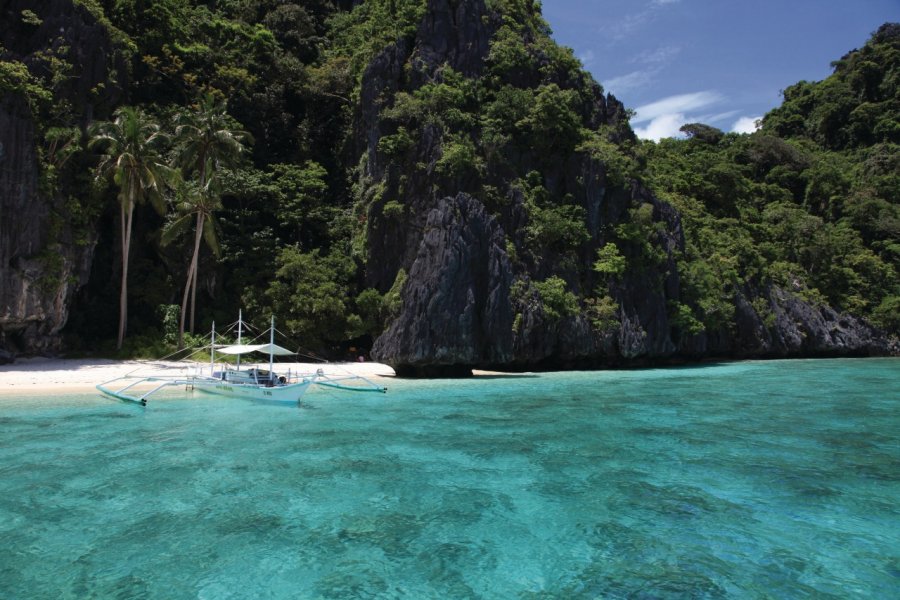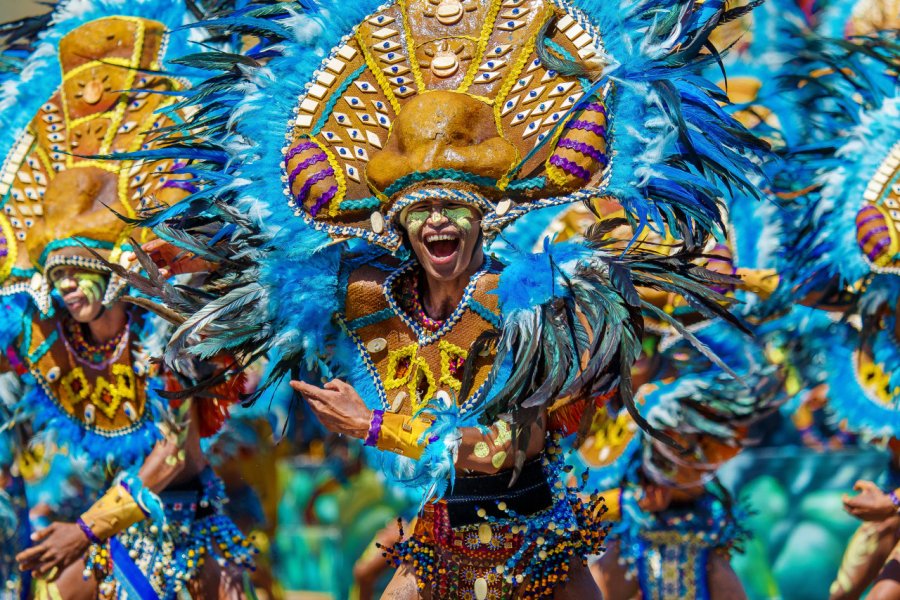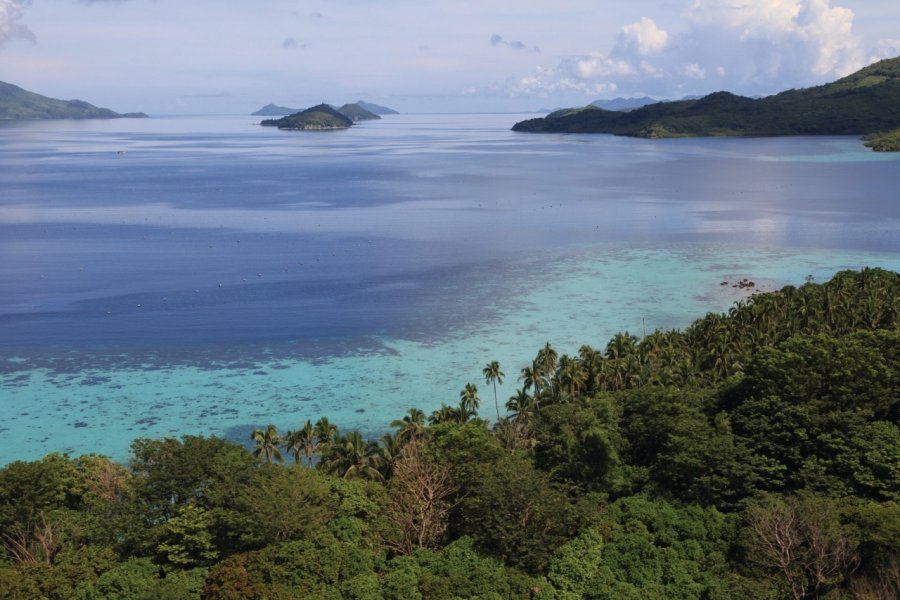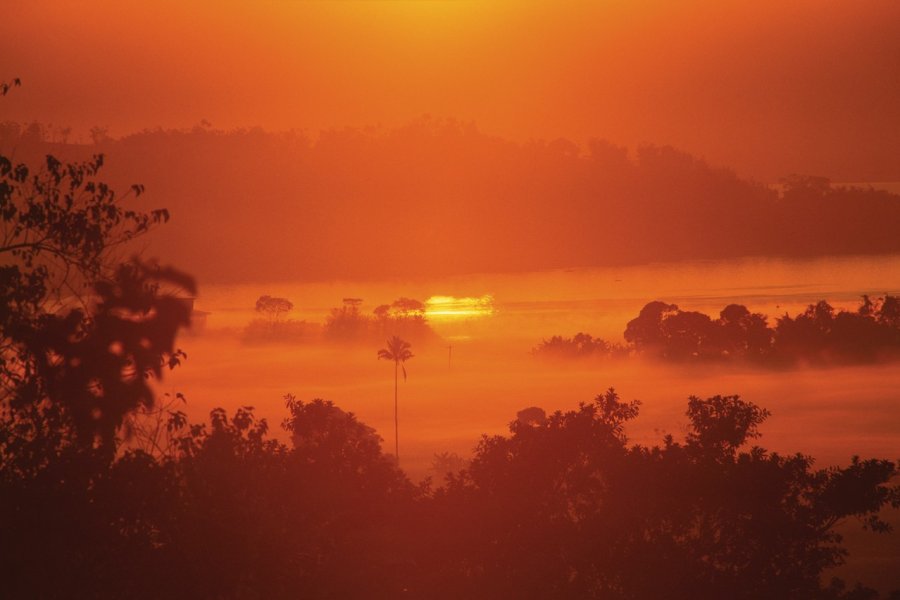Travel guide Philippines
The Philippines is an archipelago of 7,107 heavenly islands at the end of the world still spared from mass tourism. To travel to the Philippines is to live at the pace of a nonchalant and friendly people with a rich and mixed cultural identity, far from the crowd of tourists that we usually find in Southeast Asia. The Philippines is also miles of coastline punctuated by white sand beaches bathed in clear waters as on the archipelago of Bacuit or on White Beach and in the lagoons of Palawan Island. The waters of this destination are also very popular with divers because of their rich seabed where you can observe whale sharks and rays. The Philippines will also satisfy the adventurers thanks to exceptional treks such as the one in the spectacular rice terraces of the Northern Cordillera or on one of the many volcanoes, such as the Mayon volcano, that the country counts. All these activities are easy to set up with the Philippines tour guide or by using a travel agency for an organized tour.
What to see, what to do Philippines?
-
Book an activity
-
Customized travel
- The most beautiful cities Philippines
When to go Philippines ?
When to go to the Philippines? The high tourist season, and the best time to go to the Philippines, is from the beginning of November to the end of February-beginning of March and during the Holy Week (March-April). The low tourist season extends from June to October (lower rates most of the time). This monsoon period is usually punctuated by about 20 typhoons that cross the country. However, many travelers went around in August-September and had very good weather (especially in Palawan). If we had to rename the Philippines, we would certainly call this archipelago the one of festivals. They are very numerous and all very rich in colors. The locals invite visitors to their homes to share not only food, but also some good times. So, no matter when you visit the Philippines, you can attend one of the many festivals.
Suggested addresses Philippines
Travel Philippines
-
Find a hotel
-
Car Rental
-
International e-SIM package
-
Find a local agency
Avec plus de 7 000 îles, un nombre incalculable de spots à découvrir et d’activités à pratiquer, les possibilités de séjours aux Philippines sont presque infinies. Pour limiter la frustration au moment de planifier votre itinéraire, voici quelques idées de séjours d’une à trois semaines. Toutefois, une semaine pour visiter les Philippines, c’est très court : les trajets étant longs, un minimum de deux semaines s’impose si possible. Le nombre d’îles et la durée des trajets impliquent de rester plusieurs jours pour profiter de chaque endroit. Cela étant, voici plusieurs itinéraires à titre d’inspiration : d’une semaine donc pour ceux qui, à l’occasion d’un voyage business à Manille, souhaiteraient prolonger leur séjour de quelques jours aux Philippines jusqu’à trois semaines pour les chanceux qui peuvent prendre leur temps pour découvrir ce pays, en passant par des séjours 100 % aquatiques ou à la rencontre des peuples premiers.
Find unique Stay Offers with our Partners
How to go Philippines
How to go alone
The Philippines is a low risk country for independent travelers. Thefts are few, but it is better to leave your valuables in a hotel safe, especially in Manila. When traveling to Mindanao, you should be aware that you are taking some risks as some areas such as Zamboanga are considered the stronghold of armed groups who organize kidnappings for ransom. This area aside, the rest of the Philippines is not a problem.
How to go on a tour
Most of the tours in the Philippines last 15 days but count on a good 20 days for a grand tour of the archipelago. Different thematic tours are proposed by travel agencies over two weeks: an adventure tour and treks around the rice terraces and volcanoes, or a tour around the dream beaches and diving in a combined Palawan/Bohol, for example.
How to get around
It is easy to travel by plane in the Philippine archipelago, but it is mostly by boat and the many ferries that serve the islands. The most picturesque means of public transport are the jeepneys, jeeps abandoned by the American army and converted into minibuses. There are also, by extension, sea jeepneys, also known as bangkas, small wooden boats that make connections between the islands but which can also be rented by the day.
Featured articles Philippines
Discover Philippines
Ask yourself how much you know about the Philippines... apart from a few vague images of heavenly beaches, maybe not much at all. And yet, you can be sure that these 7,000 islands, with their varied landscapes and 114 million inhabitants with their diverse customs, have plenty of surprises in store for you. So, before embarking on an unforgettable voyage, why not take the time to learn a little more about the archipelago's particularities? Imagine a rich and eventful history, with diverse cultural influences shaping populations, beliefs, gastronomy and all forms of art. Imagine an exceptional seabed and geography, playgrounds for a thousand and one activities such as scuba diving and surfing. Imagine, or rather discover, all that the Philippines has to offer in terms of culture, festivities, history and landscapes.
Pictures and images Philippines
The 12 keywords Philippines
1. #Banca

Bancas are the quintessential Filipino wooden motorboats. They are used for fishing and for sailing from island to island. Some bancas can accommodate one person, others up to 50. These outrigger bamboo canoes are extremely stable and can be sailed in almost any weather.
2. #Basketball

A veritable institution in the Philippines, basketball is the population's favorite sport, played everywhere (even in the sand!) and every village, even the most isolated, has its own court where matches bring together locals and a few tourists. It was therefore a great joy for the country to host the 2023 Men's Basketball World Cup.
3. #Fiesta
Religious celebrations, birthdays, carnivals, parades, beauty contests, sports competitions, karaoke... fiestas punctuate and sweeten the daily life of Filipinos. All occasions are good to dance and sing. It is almost a way of life that the population is always delighted to share with travelers.
4. #Jeepney
The Jeepney is one of the symbols of the archipelago, which is the only country in the world to have this type of minibus. They are in fact Jeeps left by the Americans after the Second World War, which have been renovated and often decorated with lights and kitschy decorations. The music is preferably loud. It's local and convenient.
5. #Karaoke
A must! A favorite pastime of Filipinos, there's karaoke in every village, from the youngest to the oldest, and no one is shy about taking the microphone, even the worst singer. If you've got the chance to spend a karaoke evening with the locals, go for it!
6. #Kamayan
Kamayan ("by hand") is a practice also known as boodle fight. It is a gargantuan meal shared with friends or family, where food (fish, rice, vegetables, shrimps, sauces, mangoes) is laid out directly on a table covered with banana leaves. In addition to being aesthetic, it is delicious and very friendly.
7. #Sabong
Sports betting is all the rage, and sabong - cockfighting - is one of the most popular "sports". Every city has its own arena, training camps line the roads and millions of fights are organized every year. It's a real tradition in the Philippines, one of the last countries not to ban the practice.
8. #Salamat
While most Filipinos speak English, nothing will please them more than to hear you say a few words in Tagalog (Filipino language) or Visaya (the dialect of the Visayas). Among the must-haves, Salamat means thank you in Tagalog, Maayong butang, hello in Visaya and Mabuhay, welcome, is the term used for toasting.
9. #Santo Niño

A representation of the Infant Jesus, a Catholic icon venerated by Filipinos, a Santo Niño can be found in every home. It has been venerated in most regions and islands since the arrival of the Spanish and the Christianization of the country in the 16th century. The famous Sinulog Festival held in Cebu at the end of January is entirely dedicated to him.
10. #Sari-sari
Sari-sari means "variety" in Tagalog. The sari-sari is the emblematic stall where you can find everything: grocery store, tobacco shop, gas station, coffee shop. These small huts overflowing with various products are scattered along most of the roads (even the most isolated ones) and are open more or less late at night, depending on the owner's mood.
11. #Typhoon
They often appear during the rainy season, between June and October. Some of them wreak havoc while others bring only wind and rain. The Filipinos are used to face the disasters caused by these climatic cataclysms but the human and material losses are sometimes considerable.
12. #Traysikel

Understand tricycle in English. Equivalent to the tuktuk in other Asian countries, the tricycle is, like the Jeepney, a typical means of transportation in the Philippines, often used as a cab. It is a passenger cabin attached to the side of a motorcycle. Noisy, it will not fail to amaze you by its resistance in the bumpy roads.
You are from here, if...
You ride your scooter with your eyes closed (well, keep them open anyway!), everywhere, all the time, in all weathers.
You're not a stickler for schedules and punctuality; you're more of a slow-lifer.
You're tolerant, open-minded, curious and full of joie de vivre.
You don't get upset when your plane or boat is late or cancelled... you know it won't make any difference.
You have a flair for parties and festivities, and any occasion is good for dancing, singing and celebrating with friends or family (religious or village festivities, beach parties).
You have a strong bond with water: the sea is both your favorite playground (diving, surfing) and you're aware of its destructive force, and have been marked by numerous typhoons.
Family is very important to you, as are traditions.
Physical appearance is important to you. Looking good is sometimes an imperative (as well as a pleasure).

